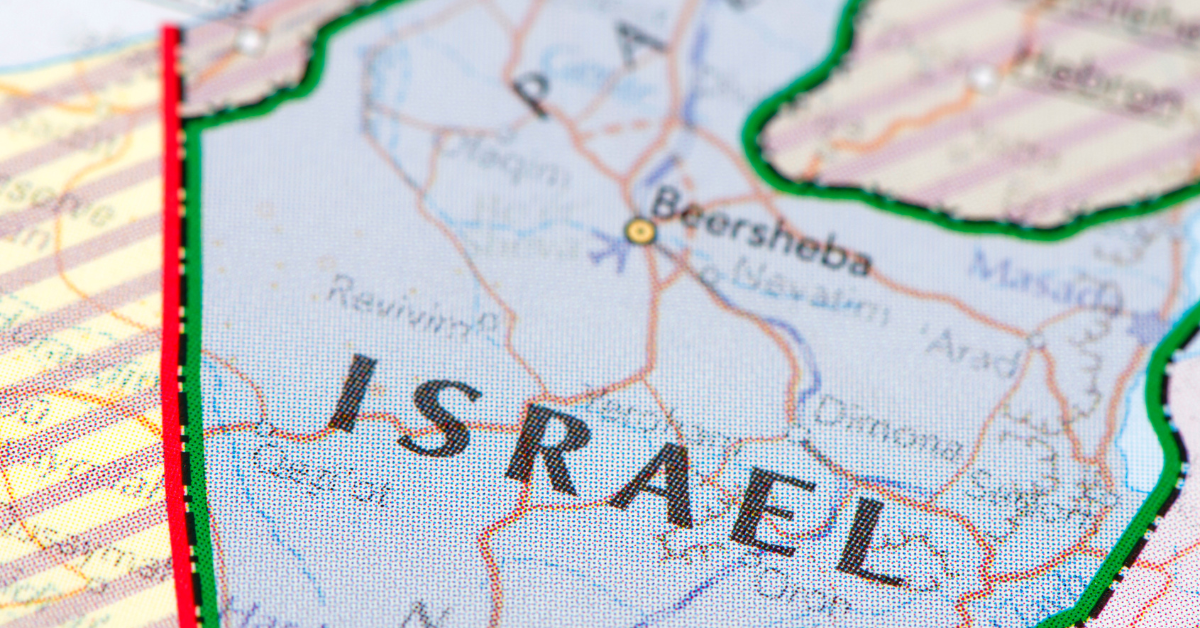When foreigners study Japanese, they are often surprised by country names written in kanji. Israel is represented as 「以色列」, but these characters were chosen not for meaning, but for sound. Understanding this helps learners see how kanji can function as phonetic symbols in Japanese.
The Cultural Background of Writing Foreign Country Names in Kanji
Since ancient times, Japan has obtained information about foreign countries through China. Place names and country names from abroad entered Japan via Chinese phonetic transcriptions, which were then adopted into Japanese. This was not to convey meaning, but rather to approximate sound as closely as possible.
For example, America was written as 「亜米利加」, England as 「英吉利」, France as 「仏蘭西」, and Portugal as 「葡萄牙」. While these notations are no longer used in everyday writing, they remain in historical documents.
Here is a table summarizing some examples:
| Country (Katakana) | Kanji notation | Sound correspondence |
|---|---|---|
| America | 亜米利加 | 亜=A, 米=Me, 利=Ri, 加=Ka |
| England | 英吉利 | 英=Ei, 吉=Gi, 利=Ri-su |
| France | 仏蘭西 | 仏=Fu, 蘭=Ran, 西=Su |
| Portugal | 葡萄牙 | 葡萄=Poruto, 牙=Gar |
| Israel | 以色列 | 以=I, 色=Su, 列=Re |
This shows clearly that kanji were chosen primarily for sound reproduction.
The Origin of 以色列
The notation 「以色列」 for Israel comes directly from Chinese phonetic transcription.
- 以 → I
- 色 → Su or Shi
- 列 → Re
Put together, it becomes “Isre,” which was then adjusted in Japanese pronunciation to “Israel.” In other words, 「以色列」 is not about meaning but a sequence of characters chosen to represent sound.
Other similar cases include:
| Foreign name | Kanji notation | Origin |
|---|---|---|
| Spain | 西班牙 | 西=Su, 班=Pa, 牙=In |
| Germany | 独逸 | 独=Do, 逸=Itsu |
| Mexico | 墨西哥 | 墨=Me, 西=Shi, 哥=Ko |
| Russia | 露西亜 | 露=Ro, 西=Shi, 亜=A |
| Canada | 加奈陀 | 加=Ka, 奈=Na, 陀=Da |
Thus, kanji here function not as meaning, but as sound markers.
Does 以色列 Have Meaning?
If read literally, 「以色列」 could be interpreted as “to line up with colors.” However, this has nothing to do with the meaning of the country name. The essential point is that these characters are not meant to be interpreted semantically but phonetically.
Foreign learners often get confused because kanji usually carry meaning. But in the case of phonetic transcriptions, sound takes precedence over meaning.
Here is a comparison:
| Perspective | Explanation | Example |
|---|---|---|
| Reading by meaning | Assigning meaning to each character | 以=with, 色=color, 列=line |
| Reading as phonetics | Understanding characters as sound markers | 以=I, 色=Su, 列=Re |
This difference is the key to correctly understanding Japanese country name notations.
How It Is Used in Modern Japanese
In modern Japanese, the country name is almost always written in katakana as 「イスラエル」. Newspapers, TV, textbooks, and official documents use katakana, as it is more straightforward and avoids misinterpretation.
However, 「以色列」 still appears in old dictionaries, historical texts, and academic references. For advanced learners or researchers, knowing these notations is valuable when reading pre-modern or scholarly texts.
| Notation | Usage | Frequency |
|---|---|---|
| Katakana (イスラエル) | Newspapers, textbooks, daily use | Very high |
| Kanji (以色列) | Old documents, academic writing | Low |
Thus, today 「以色列」 functions more as a cultural-historical remnant than a practical notation.
Key Points for Foreign Learners
When learning 「以色列」, foreign learners should remember three main points:
- Kanji are not always used for meaning; sometimes only for sound.
- Many notations came via Chinese before being adapted to Japanese.
- Katakana is standard today, while kanji is supplementary knowledge.
To study effectively, it helps to know which kanji commonly represent which sounds.
| Sound | Common kanji | Examples |
|---|---|---|
| Ra | 羅, 蘭, 列 | 以色列 (Israel), 仏蘭西 (France) |
| Ma | 馬, 米 | 亜米利加 (America), 馬来西亜 (Malaysia) |
| Shi | 西, 色, 司 | 露西亜 (Russia), 以色列 (Israel) |
| Ka | 加, 哥, 陀 | 加奈陀 (Canada), 墨西哥 (Mexico) |
| Do | 独, 度 | 独逸 (Germany), 印度 (India) |
This helps learners guess unknown phonetic notations more easily.
Historical Spread and Cultural Significance
The notation 「以色列」 is just one example of phonetic kanji usage, but it reflects Japan’s history of adopting foreign culture through China. During periods of limited direct contact with the West, Japan still learned foreign names via Chinese and Dutch sources, which carried Chinese-style phonetic transcriptions.
Regional trends of kanji usage can be summarized as follows:
| Region | Representative kanji notations | Modern notation |
|---|---|---|
| Europe | 英吉利 (England), 仏蘭西 (France), 独逸 (Germany) | Katakana |
| Asia | 支那 (China), 印度 (India), 馬来西亜 (Malaysia) | Katakana |
| Americas | 亜米利加 (America), 墨西哥 (Mexico), 加奈陀 (Canada) | Katakana |
| Middle East | 以色列 (Israel), 土耳古 (Turkey), 波斯 (Persia) | Katakana |
This shows that Israel’s notation fits into a larger global pattern of phonetic kanji names.
Conclusion
The reason Israel is written as 「以色列」 is because it is an ateji (phonetic kanji), chosen to represent sound rather than meaning. The notation was inherited from Chinese phonetic transcription.
In modern Japanese, the standard form is 「イスラエル」 in katakana, but knowing 「以色列」 provides deeper cultural understanding.
For learners, the key takeaway is that kanji do not always convey meaning—they can also function purely as phonetic markers. Recognizing this makes Japanese more enjoyable and easier to interpret in historical and academic contexts.






